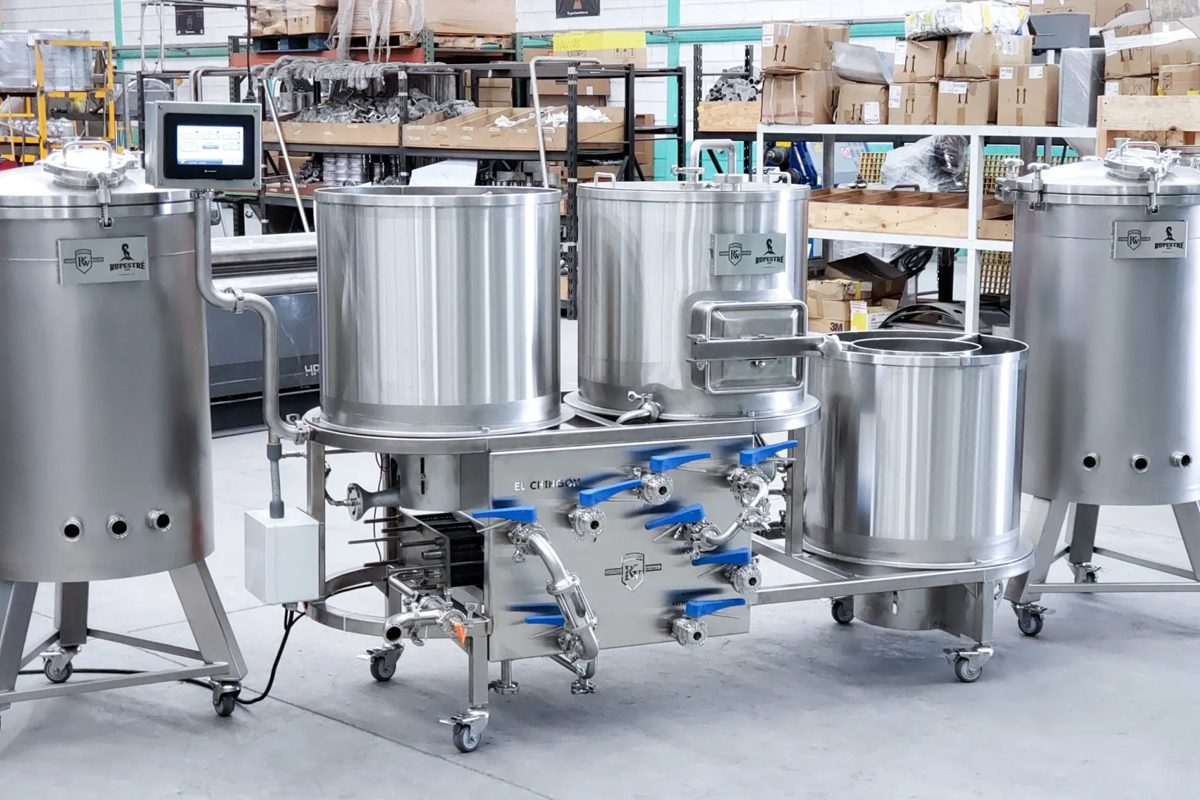
The Role Of The CIP System In Brewery Equipment
In the brewing industry, maintaining impeccable hygiene standards can help produce high-quality beer. One of the key components that help achieve this is the Clean-In-Place (CIP) system. A CIP system is an automated cleaning process that allows the internal surfaces of pipes, vessels, equipment, and filters to be cleaned without disassembly. This system plays a vital role in brewery operations by ensuring that all brewery equipment remains free from contaminants, thereby preventing spoilage and maintaining the desired taste and quality of the beer. The CIP system not only enhances the efficiency and consistency of the cleaning process but also minimizes downtime, reduces labor costs, and ensures compliance with stringent hygiene regulations. Understanding the role and function of a CIP system can help brewers optimize their operations and produce quality beer. This article delves into the various aspects of the CIP system and its significance in the brewing process.
Complete Guide
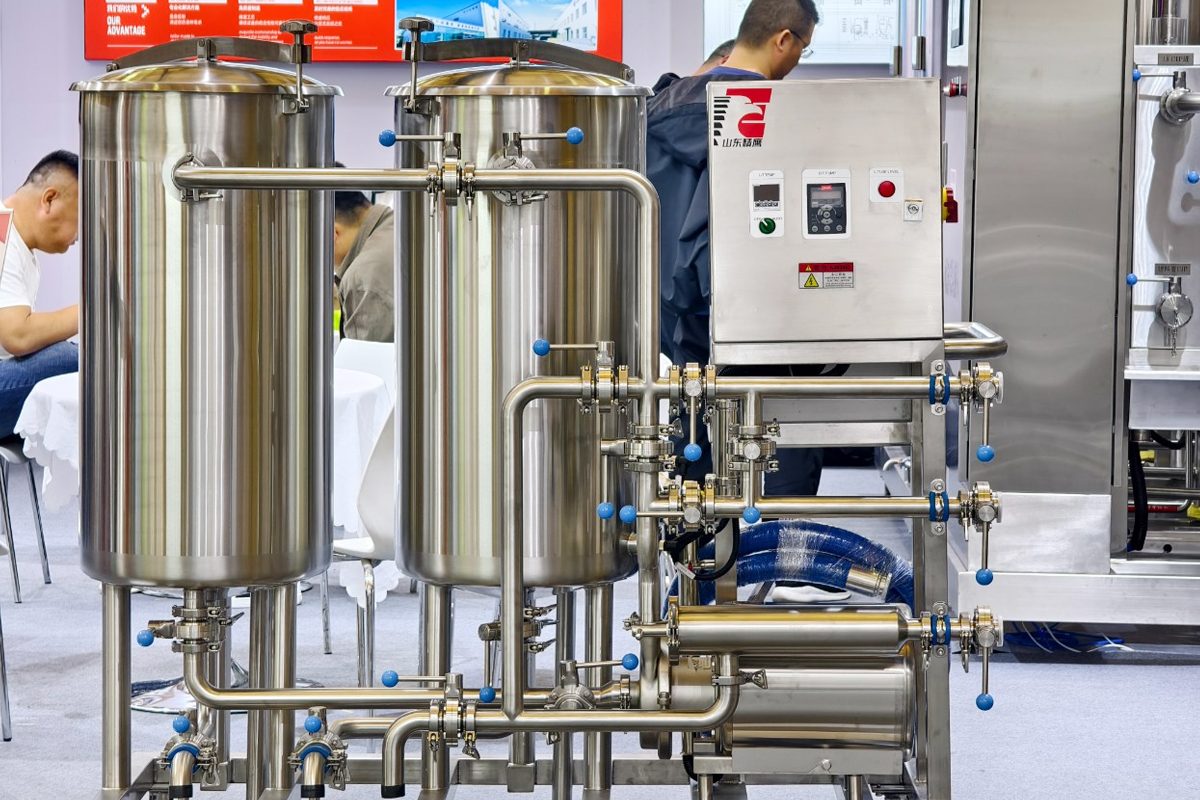
Understanding the CIP System
What is CIP?
Clean-In-Place (CIP) is an automated cleaning process used in the brewing industry to clean the interior surfaces of equipment such as tanks, pipes, and brewing vessels without having to disassemble them. The CIP system maintains sanitary conditions throughout the winemaking process, ensuring that the final product contains no contaminants that could affect its flavor, quality, or safety. By automating the cleaning process, CIP systems reduce the risk of human error, improve efficiency, and maintain consistency in hygiene standards.
Components of a CIP System
The typical CIP system consists of several key components:
- CIP Tanks: These tanks store cleaning solutions, such as caustic soda, acid, and rinse water, used during the cleaning process.
- Pumps: These circulate the cleaning solutions through the system, ensuring thorough cleaning of all internal surfaces.
- Heat Exchangers: They maintain the necessary temperature of the cleaning solution, which helps to achieve an effective cleaning step.
- Valves and Sensors: These control the flow of cleaning agents and monitor parameters like temperature, pressure, and flow rate to ensure the cleaning process is effective.
- Control Panel: This serves as the central hub for operating the CIP system, allowing brewers to set cleaning cycles, monitor progress, and ensure proper execution.
The CIP system is designed to be both thorough and efficient, ensuring that all equipment is cleaned to a high standard without the need for manual intervention. This automated process not only saves time but also reduces the risk of contamination, helping breweries maintain the quality and safety of their products.
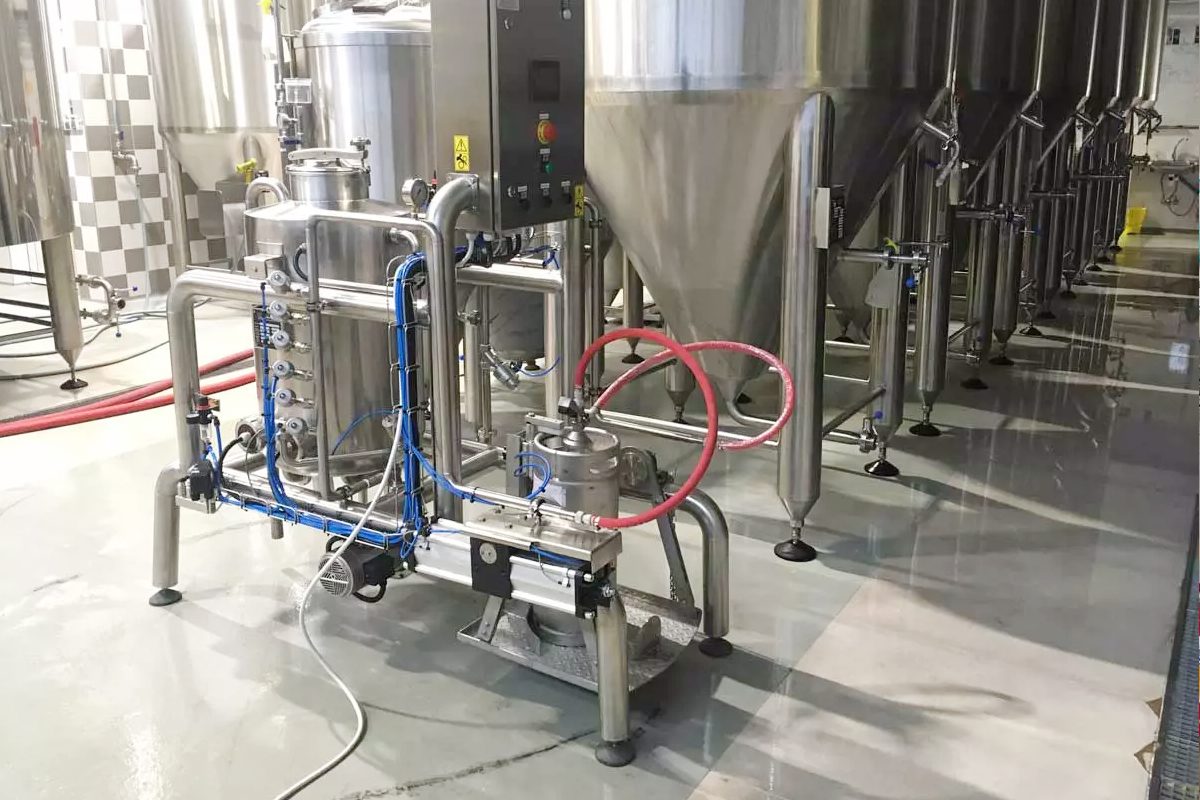
The Importance of CIP in Brewing
Ensuring Product Quality
In the brewing industry, product quality is paramount. Cleaning-in-place (CIP) systems can help maintain the high standards brewers strive for in every batch of beer. By thoroughly cleaning and sanitizing the internal surfaces of brewing equipment, the CIP system eliminates residues, microorganisms, and contaminants that can compromise the flavor, aroma, and safety of the beer. This meticulous cleaning process ensures that the beer retains its intended characteristics, free from off-flavors or spoilage. In essence, the CIP system is a cornerstone in producing beer that consistently meets the quality expectations of consumers and protects the brewery’s reputation.
Maintaining Consistency
Consistency is key to a successful brewing operation. Consumers expect the same taste and quality from their favorite beer every time they purchase it. The CIP system contributes significantly to this consistency by standardizing the cleaning process across all brewing cycles. Unlike manual cleaning, which can vary in effectiveness, the automated CIP system ensures that each piece of equipment is cleaned to the same standards. This uniformity in cleaning translates directly into uniformity in the final product, helping breweries maintain a loyal customer base by delivering a consistent drinking experience.
Regulatory Compliance
Breweries operate under stringent hygiene and safety regulations to ensure that their products are safe for consumption. The CIP system can help maintain compliance with these regulations. By automating the cleaning and sanitizing process, the CIP system ensures that all equipment is cleaned thoroughly and consistently, reducing the risk of contamination. Additionally, automated CIP systems provide detailed records of cleaning cycles, which can be crucial during regulatory inspections. By meeting and exceeding regulatory standards, breweries not only avoid penalties and shutdowns but also demonstrate their commitment to producing safe, high-quality beer.
Maximizing Efficiency
Efficiency is a critical factor in the competitive brewing industry, where time and resources are closely managed. The CIP system enhances operational efficiency by automating the cleaning process, reducing the need for manual labor, and minimizing downtime between production runs. Automated CIP systems can be programmed to clean equipment during off-hours or scheduled maintenance periods, ensuring that the production schedule remains uninterrupted. This ability to clean equipment quickly and effectively allows breweries to maximize their production capacity, reduce labor costs, and improve overall operational efficiency.
Extending Equipment Lifespan
Investing in brewing equipment is a significant expense for any brewery, making it essential to protect this investment through proper maintenance. The CIP system plays a vital role in extending the lifespan of brewing equipment by preventing the buildup of residues, scales, and other contaminants that can cause corrosion, wear, and mechanical failures. By using carefully controlled cleaning cycles with the appropriate solutions and temperatures, the CIP system ensures that equipment is cleaned thoroughly without causing damage. This proactive approach to maintenance reduces the need for costly repairs and replacements, helping breweries maintain their equipment in optimal condition for longer periods.
The CIP system is indispensable in modern brewing operations. It plays a crucial role in ensuring product quality, maintaining consistency, meeting regulatory compliance, maximizing efficiency, and extending the lifespan of equipment. By integrating a robust CIP system, breweries can enhance their production processes, safeguard their investments, and continue to deliver exceptional beer to their customers.
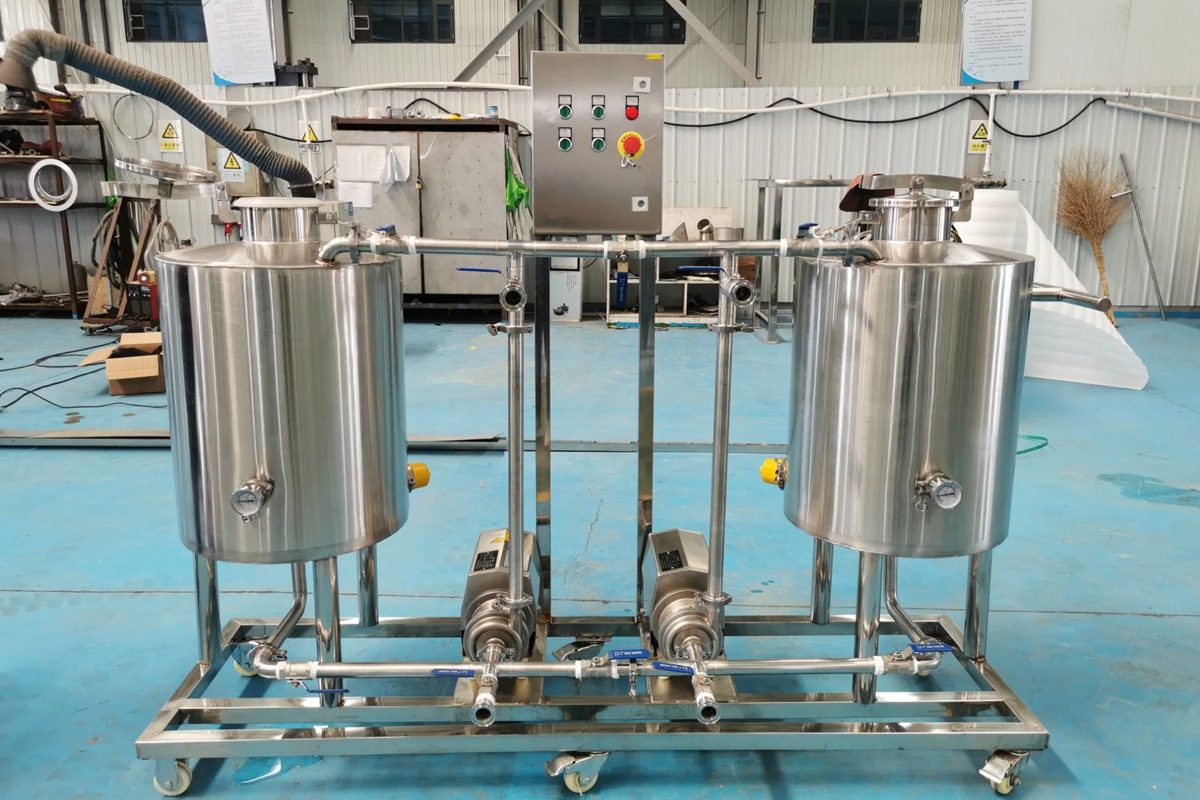
Detailed Examination of CIP System Components
A Clean-In-Place (CIP) system is a complex and integrated setup designed to maintain the hygiene of brewery equipment. Understanding the key components of a CIP system can help optimize its performance and ensure the cleanliness of brewery equipment. Below is a detailed examination of the essential components that make up a CIP system.
CIP Tanks
CIP tanks are the reservoirs that hold the various cleaning solutions used in the cleaning process. Typically, a CIP system includes multiple tanks for different solutions, such as caustic soda, acid, and rinse water. These tanks are usually made of stainless steel to resist corrosion and ensure durability. The design of CIP tanks often includes features like heating elements and agitation systems to maintain the appropriate temperature and homogeneity of the cleaning solutions. A properly maintained CIP tank ensures that cleaning agents are always ready and that the cleaning cycle is carried out efficiently.
Pumps
Pumps are the driving force behind the circulation of cleaning solutions throughout the CIP system. They ensure that the cleaning agents are delivered with the necessary pressure and flow rate to clean the internal surfaces of brewing equipment effectively. High-efficiency centrifugal pumps are commonly used in CIP systems due to their ability to handle varying flow rates and pressures. The performance of these pumps has a major impact on effective cleaning, as insufficient pressure or flow will result in incomplete cleaning, while excessive pressure may damage sensitive equipment components.
Heat Exchangers
Heat exchangers maintain the temperature of the cleaning solution, thereby increasing cleaning effectiveness. For example, caustic and acidic solutions often need to be heated to specific temperatures to break down organic residues and mineral deposits effectively. The heat exchangers in a CIP system are typically designed to rapidly heat or cool the cleaning solutions as they pass through the system, ensuring that they reach the appropriate temperature before entering the equipment being cleaned. Consistent temperature control provided by heat exchangers helps optimize the cleaning process and ensures thorough sanitization.
Valves and Sensors
Valves and sensors are integral components of a CIP system, providing precise control and monitoring throughout the cleaning process. Valves regulate the flow of cleaning solutions, directing them through different parts of the system as needed. Automated valves are often used to switch between cleaning cycles without manual intervention. Sensors monitor critical parameters such as temperature, pressure, and flow rate, providing real-time data to ensure that the cleaning process is proceeding as planned. These sensors can trigger alarms or shut down the system if any parameters fall outside of the specified ranges, preventing potential damage or incomplete cleaning.
Control System
The control system serves as the brain of the CIP system, overseeing and managing the entire cleaning process. It allows operators to program and customize cleaning cycles according to the specific requirements of the brewery equipment. Advanced control systems can be integrated with the brewery’s overall automation system, providing seamless operation and data logging capabilities. This integration allows for precise control over the timing, duration, and sequence of cleaning steps, ensuring that each piece of equipment is cleaned thoroughly and efficiently. The control system also provides detailed reports and logs of each cleaning cycle, which can be useful for regulatory compliance and process optimization.
Piping and Spray Balls
Piping and spray balls are the delivery mechanisms for the cleaning solutions within the CIP system. The piping network connects the CIP system to the brewery equipment, allowing cleaning solutions to be circulated throughout the system. Spray balls are strategically placed inside tanks, vessels, and piping to disperse cleaning solutions evenly across all surfaces. These devices are designed to create high-impact spray patterns that effectively remove residues and contaminants. The spray balls are designed and placed to ensure complete coverage and thorough cleaning of interior surfaces.
The CIP system’s components work together to ensure the cleanliness and hygiene of brewery equipment. Understanding the function and importance of each component—CIP tanks, pumps, heat exchangers, valves and sensors, control systems, piping, and spray balls—enables brewers to optimize their cleaning processes and maintain high standards of quality and safety in their operations. Properly maintained and operated, these components ensure that the CIP system performs reliably, helping breweries produce consistently high-quality beer.
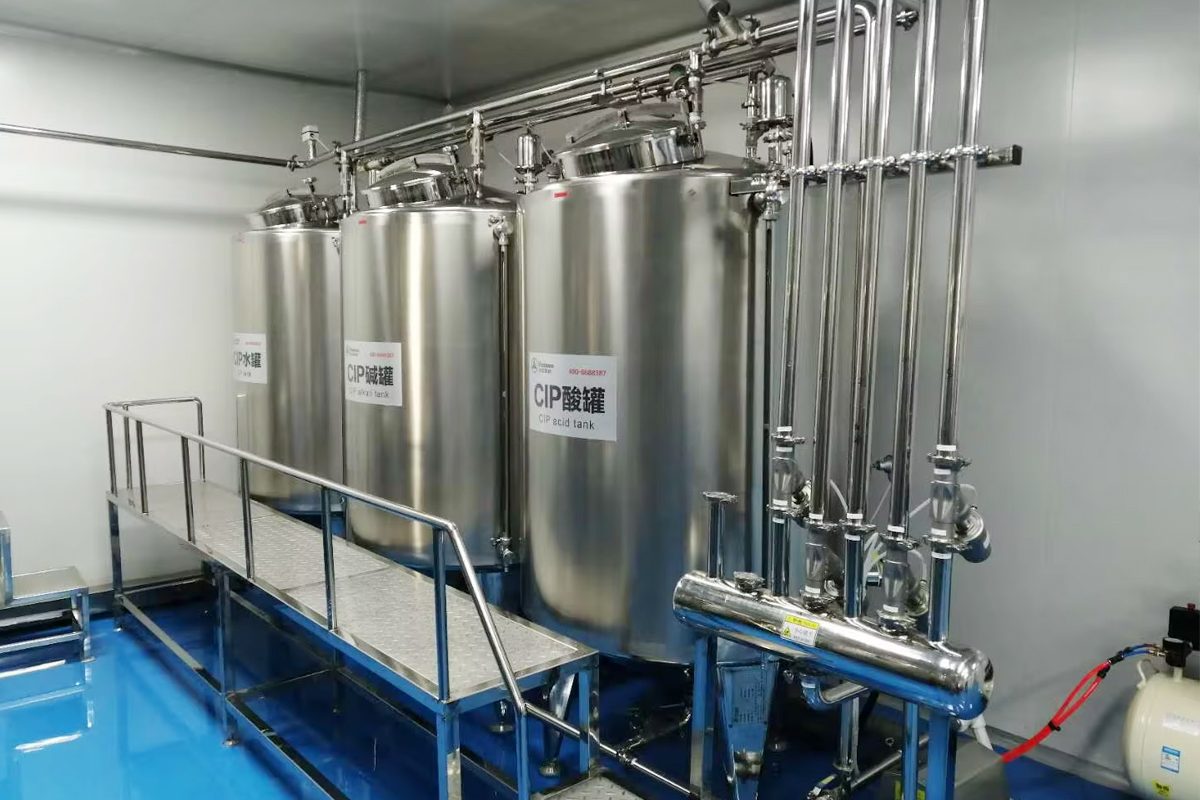
The CIP Process in Detail
The Clean-In-Place (CIP) process is a meticulously designed sequence of steps that ensures brewing equipment is thoroughly cleaned and sanitized without the need for disassembly. Each step in the process plays a crucial role in removing residues, microorganisms, and contaminants from the equipment. Below is a detailed examination of each stage of the CIP process.
Pre-Rinse
The CIP process begins with the pre-rinse stage, where the equipment is flushed with water to remove loose debris, product residues, and any remaining beer from the previous batch. The initial rinse typically uses cold or warm water, which helps reduce the organic load that subsequent cleaning steps must deal with. The pre-rinse helps prepare the surfaces for the chemical cleaning agents by ensuring they can come into direct contact with the equipment, enhancing their effectiveness.
Caustic Wash
Following the pre-rinse, the caustic wash step is performed to remove organic residues such as proteins, sugars, and fats that may be left on the equipment surfaces. A caustic solution, usually containing sodium hydroxide (NaOH), is circulated through the equipment at elevated temperatures. The caustic wash is highly effective at breaking down and dissolving organic material, ensuring that any residual beer, yeast, or other organic matter is thoroughly removed. The duration and temperature of the caustic wash are carefully controlled to optimize cleaning without damaging the equipment.
Intermediate Rinse
After the caustic wash, an intermediate rinse is conducted to flush out any remaining caustic solution and loosened residues from the equipment. This rinse is usually done with clean water, which prevents cross-contamination between the alkaline and acid washes. The intermediate rinse helps ensure that the next cleaning agent—typically an acid—can work effectively without being neutralized by residual caustic solution. This step also reduces the risk of caustic contamination in the final product, protecting the quality of the beer.
Acid Wash
The acid wash stage follows the intermediate rinse and is designed to remove inorganic residues such as mineral scale and beer stone (calcium oxalate) that can build up on the surfaces of brewing equipment. An acidic solution, often containing phosphoric or nitric acid, is circulated through the system to dissolve these mineral deposits. Pickling preserves the integrity of the stainless steel surface, prevents corrosion, and ensures that the equipment remains in optimal condition. This step also helps maintain the smoothness of the equipment surfaces, reducing the potential for microbial growth.
Final Rinse
The final rinse is a crucial step in the CIP process, where the equipment is flushed with clean water to remove any residual acid and dissolved mineral deposits. This rinse ensures that no chemical residues are left on the equipment, which could affect the taste and quality of the beer. The final rinse typically uses water that has been treated to remove any impurities, ensuring that the equipment is left in a clean and neutral state. This step also helps cool the equipment down, preparing it for the final stage of sanitization.
Sanitization
The final stage of the CIP process is sanitization, where a sanitizing agent is used to eliminate any remaining microorganisms that could potentially contaminate the beer. Common sanitizers include peracetic acid, chlorine dioxide, or other food-safe sanitizing solutions. The sanitizing solution is circulated through the equipment for a specific period, ensuring that all surfaces are thoroughly disinfected. In some cases, the sanitizer may be left in the system until just before the next production run, providing an additional layer of protection against contamination. Sanitization helps maintain product quality and safety by ensuring that brewing equipment is safe to use for the next batch of beer.
The CIP process is a comprehensive cleaning regimen that ensures brewery equipment is thoroughly cleaned and sanitized. By following the detailed steps of pre-rinse, caustic wash, intermediate rinse, acid wash, final rinse, and sanitization, breweries can maintain the highest standards of hygiene, protecting the quality and safety of their beer while extending the lifespan of their equipment.
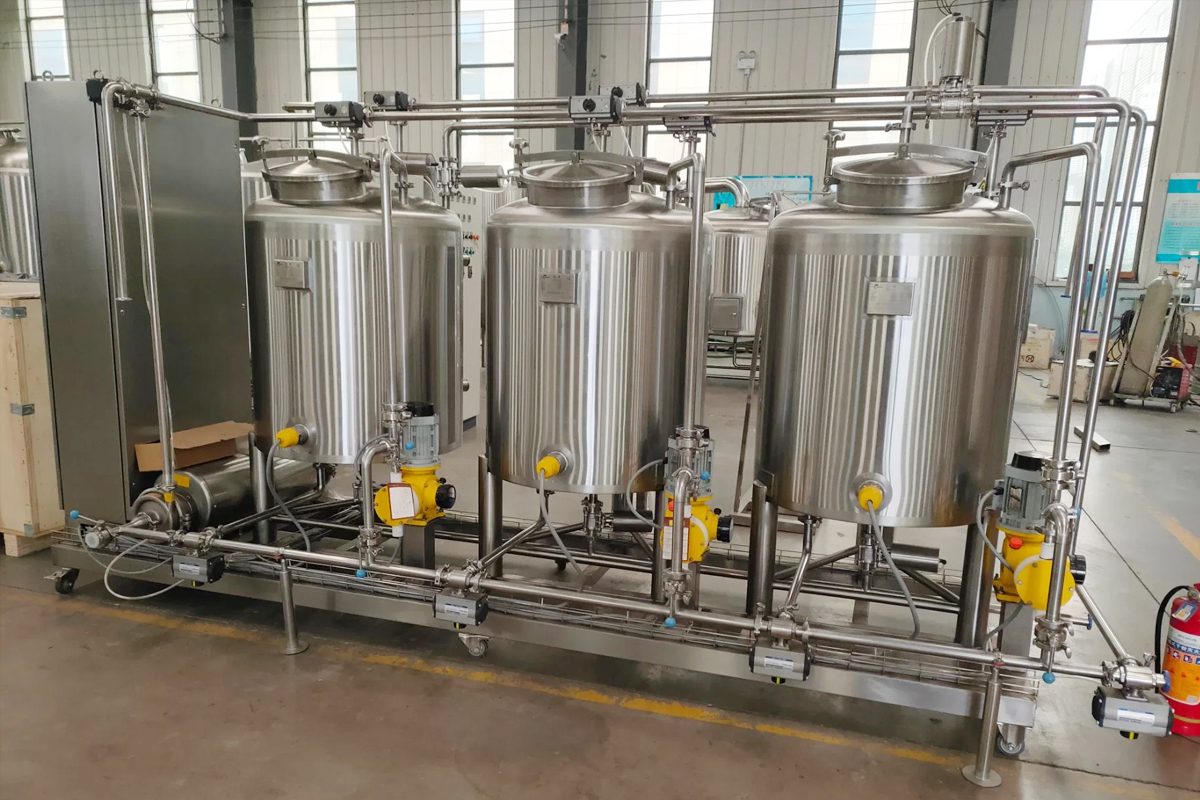
Benefits of the CIP System in Brewery
The Clean-In-Place (CIP) system offers numerous advantages for breweries, making it an indispensable component in modern brewing operations. Below is a detailed exploration of the key benefits that a CIP system brings to a brewery.
Time Efficiency
One of the most significant benefits of the CIP system is its ability to save time. Unlike manual cleaning methods, which require disassembling equipment and can take hours, the CIP system cleans equipment in place, without the need for dismantling. This automation allows for faster cleaning cycles, minimizing downtime between production runs. By speeding up the cleaning process, the CIP system enables breweries to maximize their production capacity, meet tight schedules, and reduce labor costs associated with manual cleaning.
Consistent Cleaning
Consistency in cleaning enables high hygiene standards to be maintained in the brewery. The CIP system ensures that each cleaning cycle is performed to the same exacting standards, regardless of the operator or time of day. Automated cleaning routines can be programmed to follow precise protocols, ensuring that every surface is cleaned thoroughly and consistently. This uniformity in cleaning reduces the risk of contamination, ensures that residues and microorganisms are effectively removed, and contributes to the overall quality and safety of the beer.
Water and Chemical Savings
The CIP system is designed to optimize the use of water and cleaning chemicals, leading to significant cost savings and environmental benefits. By recycling and reusing cleaning solutions within the system, the CIP process reduces the volume of water and chemicals needed for each cleaning cycle. Advanced CIP systems also allow for precise control over the concentration and temperature of cleaning agents, further minimizing waste. This efficient use of resources not only lowers operating costs but also supports sustainable brewing practices by reducing the brewery’s environmental footprint.
Improved Safety
Safety is a top priority in any brewery, and the CIP system plays a critical role in enhancing workplace safety. By automating the cleaning process, the CIP system reduces the need for manual handling of hazardous chemicals and hot water, minimizing the risk of accidents and injuries. The system also eliminates the need for workers to enter confined spaces, such as tanks and vessels, which can be dangerous. Additionally, the CIP system’s ability to thoroughly clean and sanitize equipment reduces the risk of biological hazards, such as microbial contamination, ensuring that the brewing environment remains safe for workers and the final product.
Enhanced Product Quality
The CIP system directly contributes to the production of high-quality beer by maintaining a clean and sanitary brewing environment. By removing residues, microorganisms, and contaminants, the CIP system ensures that each batch of beer is free from off-flavors, spoilage, and other quality issues. This thorough cleaning process helps breweries maintain the flavor, aroma, and appearance of their products, leading to consistently high-quality beer that meets consumer expectations. Enhanced product quality not only satisfies customers but also builds brand loyalty and a strong market reputation.
Regulatory Compliance
Breweries are subject to stringent regulatory standards regarding hygiene and safety, and the CIP system is essential for maintaining compliance with these regulations. Automated CIP systems are designed to meet or exceed industry standards, ensuring that all cleaning and sanitizing processes are performed to the required specifications. Additionally, CIP systems often include data logging and reporting features that provide detailed records of each cleaning cycle, which can be invaluable during regulatory inspections. By ensuring compliance, the CIP system helps breweries avoid penalties, recalls, and other legal issues, protecting their operations and reputation.
Flexibility
Modern CIP systems offer a high degree of flexibility, allowing breweries to customize cleaning routines based on the specific needs of their equipment and production schedules. Whether cleaning a single fermentation tank or an entire production line, the CIP system can be tailored to handle different types of equipment, cleaning agents, and cycle durations. This flexibility allows breweries to adapt to changes in production volume, recipe variations, and new equipment, ensuring that the cleaning process remains efficient and effective regardless of the circumstances.
The CIP system offers numerous benefits that make it an integral part of brewery operations. From time efficiency and consistent cleaning to resource savings, improved safety, enhanced product quality, regulatory compliance, and flexibility, the CIP system supports the production of high-quality beer while optimizing operational efficiency and safety. By investing in a robust CIP system, breweries can protect their products, their workforce, and their bottom line, ensuring long-term success in a competitive industry.
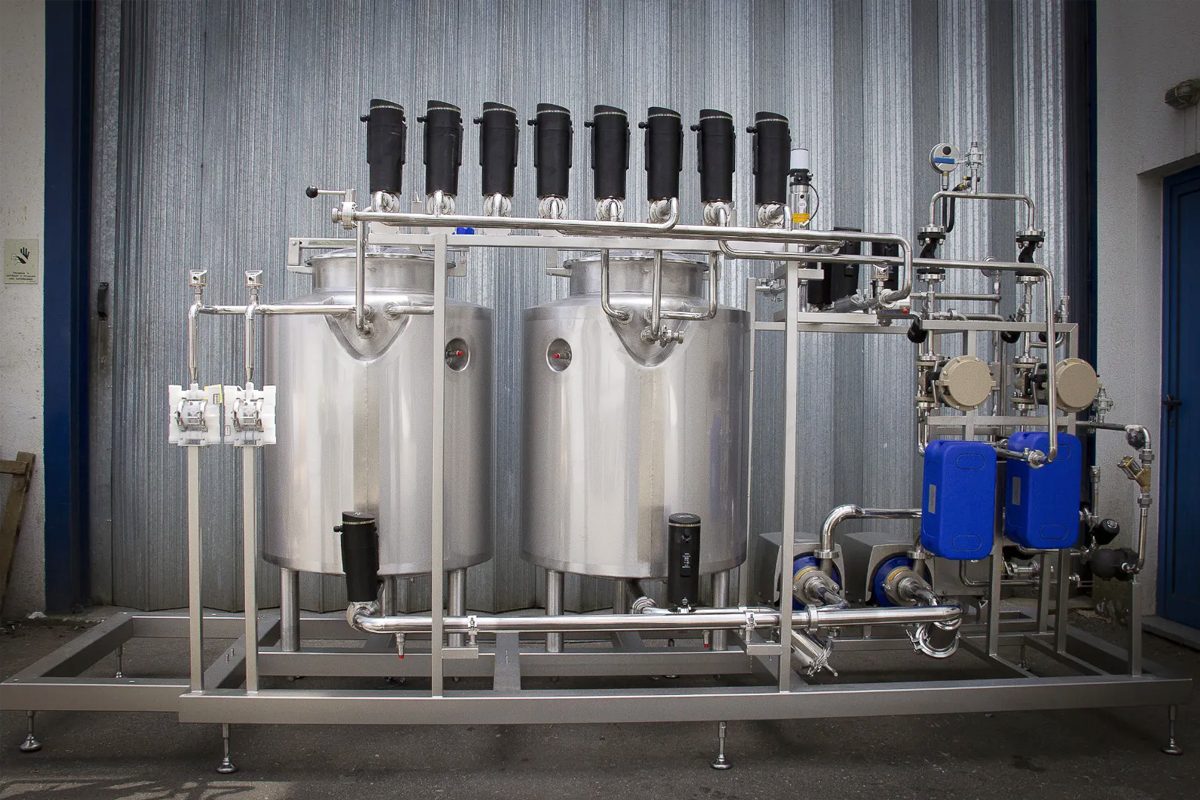
Challenges and Considerations
System Design
Designing an effective CIP system involves several critical considerations to ensure optimal performance. One challenge is tailoring the system to the specific needs of the brewery, which requires a thorough understanding of the equipment layout, cleaning requirements, and production processes. The design must accommodate various types of equipment, such as tanks, pipes, and valves, each with its own cleaning needs. Additionally, ensuring that the CIP system is scalable and adaptable to future changes in production capacity or equipment types is crucial. Proper system design also involves selecting suitable materials for construction to withstand the corrosive nature of cleaning agents and high temperatures.
Maintenance
Regular maintenance keeps your CIP system running efficiently. Over time, components such as pumps, valves, and sensors may wear out or become clogged, leading to reduced performance or system failures. A regular maintenance routine, including inspecting and cleaning components, checking for leaks, and calibrating sensors, can prevent such problems. Additionally, maintaining accurate records of maintenance activities helps in identifying potential problems before they escalate. Ensuring that the CIP system is properly maintained not only prolongs its lifespan but also ensures consistent cleaning performance and minimizes downtime.
Training
Training is a crucial aspect of operating a CIP system effectively. Brewery staff must be knowledgeable about the system’s operation, including how to set up cleaning cycles, handle cleaning agents safely, and troubleshoot common issues. Proper training helps prevent errors that could compromise the cleaning process or lead to safety hazards. It is also important to provide ongoing training and refreshers to keep staff updated on any system upgrades or changes in cleaning procedures. Investing in comprehensive training programs ensures that personnel are competent and confident in managing the CIP system, contributing to overall operational efficiency.
Monitoring and Validation
Continuous monitoring and verification of your CIP system ensures it is operating effectively and meeting sanitation standards. Monitoring involves tracking key parameters such as temperature, flow rate, pressure, and chemical concentration during cleaning cycles. Validation ensures that the CIP process consistently achieves the desired level of cleanliness and sanitation. This may involve conducting microbiological tests or using sensors to detect residual contaminants. Regularly reviewing and validating the CIP system helps identify areas for improvement and ensures compliance with regulatory requirements. Implementing robust monitoring and validation procedures helps maintain high standards of cleanliness and product safety.
Environmental Impact
The environmental impact of the CIP system is an important consideration for breweries committed to sustainability. CIP systems use significant amounts of water and cleaning chemicals, which can contribute to environmental pollution if not managed properly. Implementing water recycling systems, optimizing cleaning cycles to reduce chemical usage, and choosing environmentally friendly cleaning agents are strategies to minimize the environmental footprint of the CIP process. Additionally, monitoring and managing waste generated from the CIP process, such as spent cleaning solutions, helps reduce the brewery’s overall environmental impact. By adopting sustainable practices, breweries can balance operational efficiency with environmental responsibility.
While a CIP system keeps brewery equipment clean and sanitary, it also presents several challenges that must be addressed to ensure its effectiveness. Careful system design, regular maintenance, comprehensive training, rigorous monitoring and validation, and consideration of environmental impacts are all crucial factors in overcoming these challenges. By addressing these considerations, breweries can optimize their CIP systems, enhance their operations, and contribute to a more sustainable brewing industry.
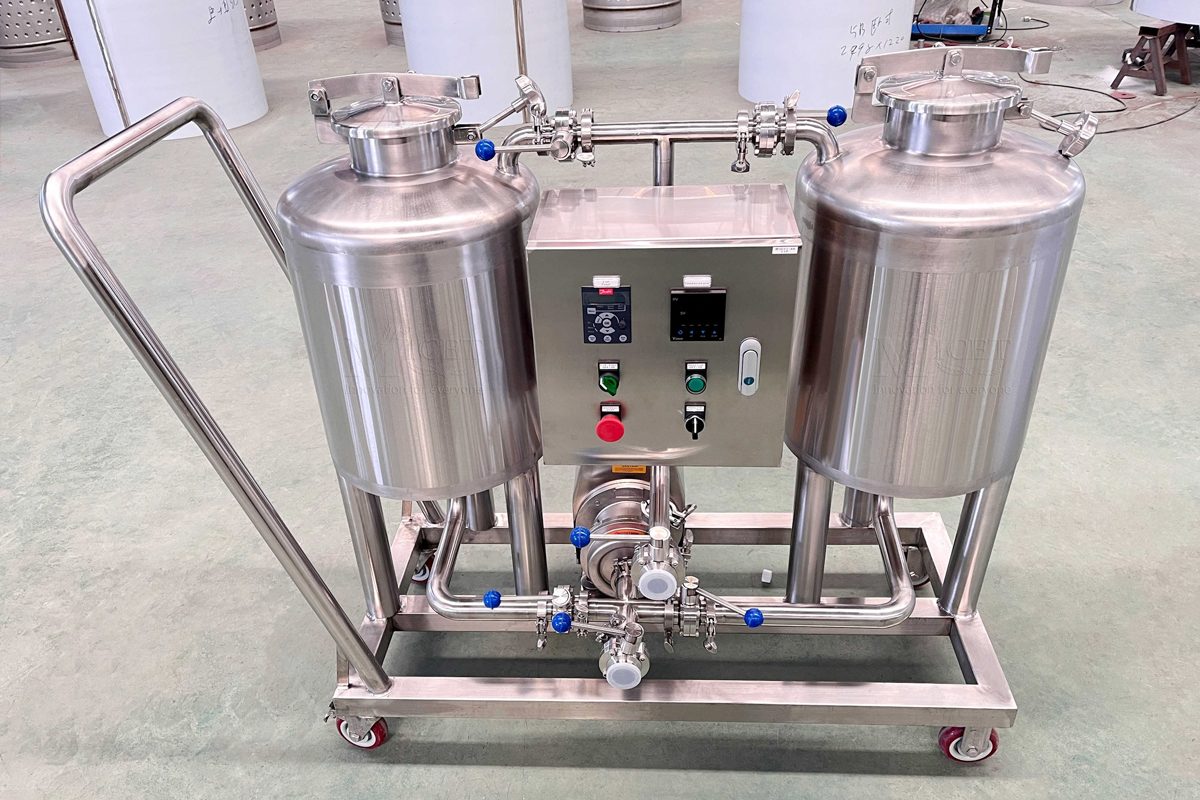
Best Practices for Implementing and Operating a CIP System
Implementing and operating a Clean-In-Place (CIP) system effectively requires careful planning and adherence to best practices. Following these guidelines helps ensure that the system performs optimally, maintaining high hygiene standards and operational efficiency.
Thorough System Design and Planning
- Understand Equipment Needs: Conduct a detailed assessment of the equipment to be cleaned, including tanks, pipes, valves, and other components. Design the CIP system to address the specific cleaning requirements of each type of equipment.
- Plan for Scalability: Design the system with future expansion in mind. Ensure that it can be easily adapted to accommodate new equipment or increased production capacity.
- Choose Durable Materials: Use high-quality materials for system construction that can withstand the corrosive nature of cleaning agents and high temperatures.
Optimize Cleaning Procedures
- Develop Standard Operating Procedures (SOPs): Create detailed SOPs for the CIP process, including specific cleaning protocols, concentrations of cleaning agents, temperatures, and cycle times. Ensure that these procedures are tailored to the needs of your brewery and the types of residues encountered.
- Regularly Review and Update Procedures: Continuously review and update cleaning procedures based on performance data, feedback from staff, and changes in production processes or equipment.
Regular Maintenance and Calibration
- Establish a Maintenance Schedule: Develop a regular maintenance schedule that includes inspections, cleaning, and repairs of system components such as pumps, valves, and sensors. Regular maintenance helps prevent breakdowns and ensures consistent performance.
- Calibrate Equipment: Periodically calibrate sensors and control systems to ensure accurate measurement of key parameters like temperature, pressure, and flow rate.
Comprehensive Staff Training
- Provide Initial and Ongoing Training: Train staff on the operation of the CIP system, including how to set up cleaning cycles, handle chemicals safely, and troubleshoot common issues. Offer ongoing training to keep staff updated on system changes and best practices.
- Promote Awareness of Safety Protocols: Ensure that staff are aware of and adhere to safety protocols related to handling cleaning agents and operating the CIP system.
Effective Monitoring and Validation
- Monitor Key Parameters: Continuously monitor key parameters such as temperature, flow rate, and chemical concentration during cleaning cycles. Use real-time data to detect and address any deviations from the desired conditions.
- Conduct Validation Tests: Regularly validate the CIP process through microbiological testing or other methods to ensure that it effectively removes residues and contaminants. Use validation results to make any necessary adjustments to the cleaning process.
Implement Environmental Sustainability Measures
- Optimize Chemical Usage: Use the minimum effective concentration of cleaning agents to reduce chemical waste. Consider adopting environmentally friendly cleaning agents where possible.
- Recycle Water: Implement water recycling systems to reuse water from CIP processes, minimizing overall water consumption and waste.
- Manage Waste Responsibly: Properly manage and dispose of waste generated by the CIP process, including spent cleaning solutions and rinse water, to minimize environmental impact.
Documentation and Record-Keeping
- Maintain Detailed Records: Keep comprehensive records of cleaning cycles, maintenance activities, and validation results. Detailed documentation helps track performance, identify trends, and ensure compliance with regulatory requirements.
- Use Data for Continuous Improvement: Analyze records and data to identify areas for improvement in the CIP process. Use this information to make informed decisions about system upgrades or procedural changes.
Engage in Continuous Improvement
- Solicit Feedback: Regularly seek feedback from staff regarding the CIP system’s performance and any challenges encountered. Use this feedback to make necessary adjustments and improvements.
- Stay Informed About Innovations: Keep up with advancements in CIP technology and practices. Implement new technologies or practices that could enhance system efficiency and effectiveness.
By adhering to these best practices, breweries can ensure that their CIP systems are implemented and operated effectively, contributing to high product quality, operational efficiency, and regulatory compliance. These practices help maintain a clean and sanitary brewing environment, ultimately supporting the production of safe and high-quality beer.
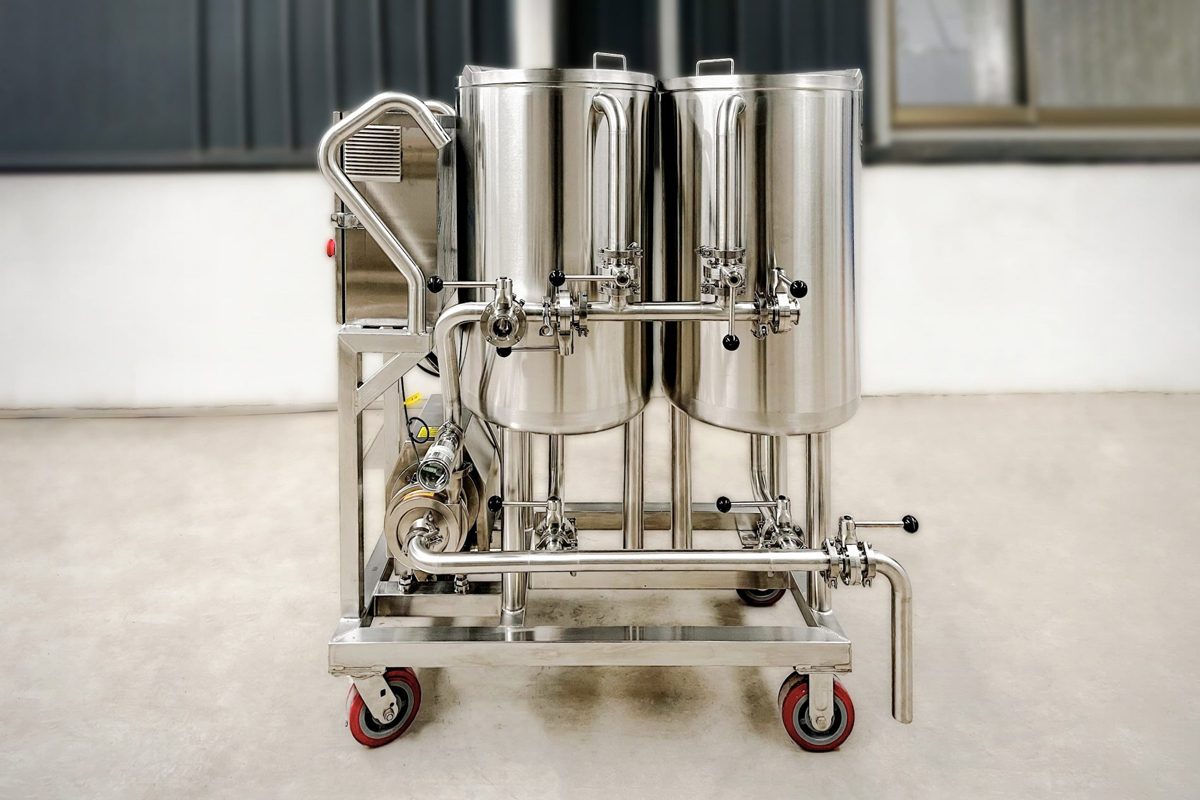
Summary
The Clean-In-Place (CIP) system is indispensable in modern brewery operations, playing a crucial role in maintaining high hygiene standards and ensuring the production of quality beer. By automating the cleaning process, CIP systems enhance efficiency, consistency, and regulatory compliance while extending the lifespan of brewery equipment. Effective CIP systems involve careful design, regular maintenance, and comprehensive staff training, alongside rigorous monitoring and validation to ensure optimal performance. Best practices include optimizing cleaning procedures, adopting environmentally sustainable measures, and maintaining detailed records. Despite the challenges of system design, maintenance, and training, the benefits of a well-implemented CIP system are substantial, contributing to reduced downtime, consistent product quality, and overall operational efficiency. Embracing these practices ensures that breweries can meet stringent hygiene standards, minimize waste, and deliver exceptional beer, reinforcing the essential role of CIP systems in the brewing process.
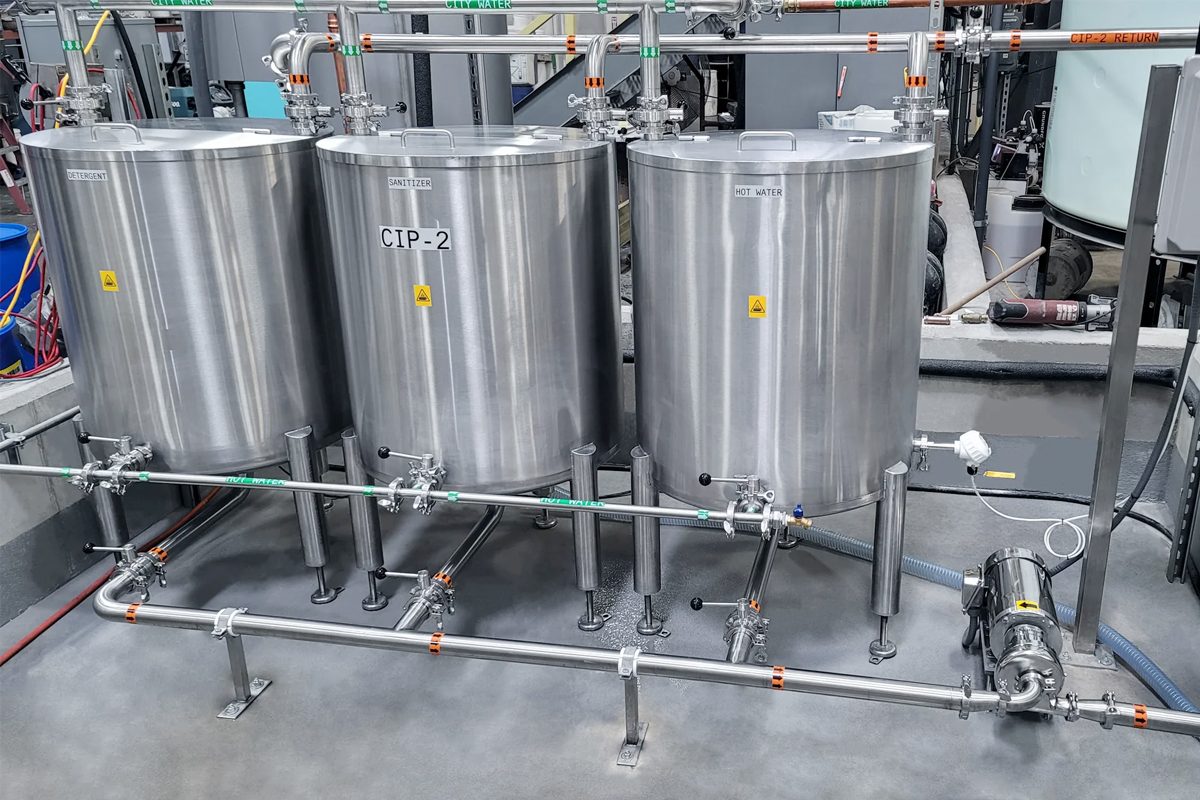
Get A Turnkey Brewery Solutions
For breweries aiming to optimize their operations and ensure top-notch cleanliness, ZYB Craft offers comprehensive turnkey brewery solutions that include state-of-the-art Clean-In-Place (CIP) systems. As a leading provider in the industry, ZYB Craft specializes in delivering fully integrated brewing systems designed to streamline every aspect of the brewing process, from initial setup to ongoing maintenance. Our turnkey solutions encompass not only advanced CIP technology but also equipment selection, installation, and system integration. By leveraging ZYB Craft’s expertise, breweries can benefit from customized CIP systems that ensure effective and efficient cleaning, reducing downtime and maintaining the highest hygiene standards. With a focus on quality and reliability, ZYB Craft provides solutions that enhance operational efficiency, support regulatory compliance, and contribute to the production of superior beer. Contact ZYB Craft to learn how our turnkey solutions can improve your brewery’s performance and sanitation practices.



